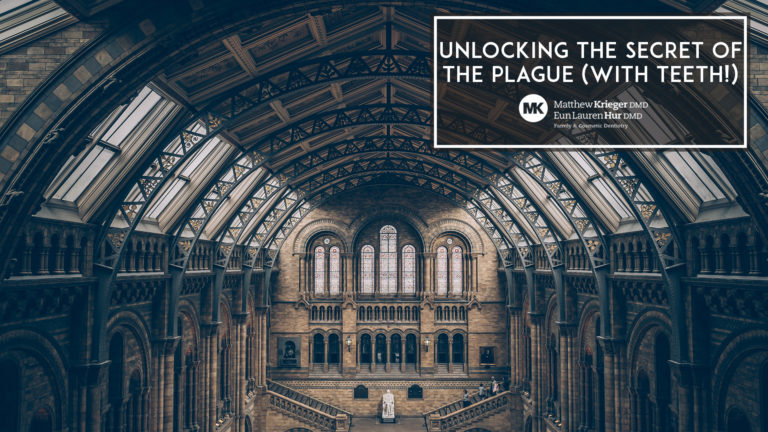Throughout history people have wanted straight teeth and a perfect smile. Cultures across the planet and through time have been obsessed with finding ways to improve what nature gave out and stopped at nothing to align jaws, fix bite issues and get a better smile. These days, thankfully, we have painless and nearly transparent orthodontic treatments like Invisalign, but the history of orthodontics wasn’t always so pretty, pleasant or painless.
The Pre-History of Braces: Ancient Egypt
Can you imagine tying animal intestines around your teeth to try to close gaps? If the thought leaves you with a bad taste in your mouth, you’re not alone. But that’s exactly what the ancient Egyptians did in an effort to fix their smiles. These ingenious early people would make cord from the dried intestines of sheep and horses and tie them around metal posts placed against the teeth in a system not unlike modern orthodontic wires for major alignment issues are run today.
Interestingly enough, the bulk of Egyptian braces were placed on individuals after death. Because their culture placed such a strong emphasis on the afterlife, individuals who could afford it was outfitted with orthodontics to keep their teeth intact for the great hereafter. Invisalign certainly sounds much more pleasant AND doesn’t require posthumous placement — a clear improvement upon the Egyptian methods!
The 17th and 18th Centuries: The Birth of Early Braces
There’s a big gap of time where orthodontics stalled out — various practices from various cultures throughout time advocated for straightening, aligning or filing teeth to keep them looking great. But most treatments were crude and painful compared to what we have today. In the 17th century, the dental world began taking impressions using wax starting with an intrepid fellow named Matthaeus Gottfried Purmann, who wanted to have a better understanding of how bite affected function.
The mid 1700’s was a boom time for orthodontics. Philip Pfaff improved upon the wax casts of his predecessors and started using plaster of Paris, which enabled a more lasting impression to be taken and worked with.
The man who would be considered the “father of dentistry,” Pierre Fauchard, invented the first modern appliance to correct teeth alignment. The bandeau, a strip of metal shaped like a horseshoe, was placed over teeth to nudge them into place and thus braces were born. Although his invention gained traction, other practices, such as inserting swollen wooden splinters between overcrowded teeth to drive them further apart, persisted. Ouch!
Orthodontics in the Modern Era
A history of braces without mention of Edward Hartley Angle isn’t a true history at all. Founder of the American Association of Orthodontists in 1901, he was able to take centuries of crude work and research and figure out a better, more painless way to achieve a straighter smile. This is how metal braces utilizing wound wires were created.
These unsightly braces persisted until the 1970’s, when adhesives and lingual braces — which run along the insides of the teeth — hit the scene, dramatically improving the aesthetics of wearing braces.
Invisalign — the clear aligners that are the current alternative for braces for minor to moderate alignment and bite issues — weren’t even a dream until 1997 when inventors Zia Chishti and Kelsey Wirth began to work on them. Chishti’s own struggles as an adult orthodontics patient inspired the invention. The treatment received FDA approval in 1998, and the system caught traction two years later, with 75 percent of all orthodontists in the United States trained in how best to provide Invisalign treatment to their patients.
The History of Braces: From Animal Guts to Invisalign
The practice of fixing spacing issues, bite issues and general teeth alignment has come a long way from the early days of using metal and animal guts or swollen wooden splinters to try to prod teeth into an optimal position.
Today’s options for treatment include braces — thankfully a far cry from the earliest ones that are far less painful and unsightly — and clear aligners like Invisalign that make fixing your teeth nearly seamless. While the Invisalign vs. braces debate rages on amongst patients, no one solution is right for everybody.
Call Us Today for Your Straighter Teeth Solution
The offices of Drs. Krieger and Hur make Invisalign and other cosmetic dentistry treatments easy and convenient, often completing procedures the same day! When your smile needs perfecting, but your time is limited, give us a call at 201-560-0606 or email us here and we’ll get you fast-tracked back to eye-catching confidence.
We heard your selfies could be a lot better, so we wrote a “How to Take a Great Selfie” guide to help you show off our great handywork. It’ll be our little secret! You don’t have to tell anyone that your dentist helped you perfect those iconic social media images.
Just click the here, enter your email and download the PDF. Nothing could be easier. While you’re at it, go ahead and sign up for our newsletter for more tips for keeping that smile white and bright.


